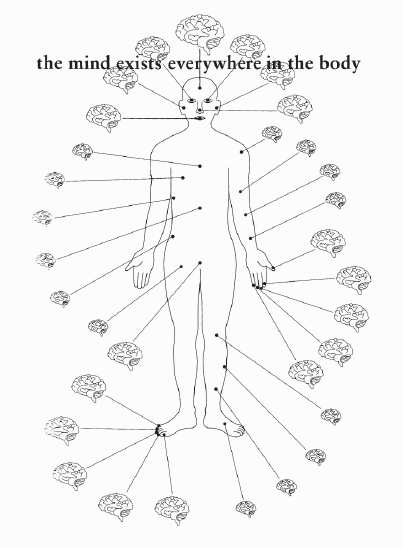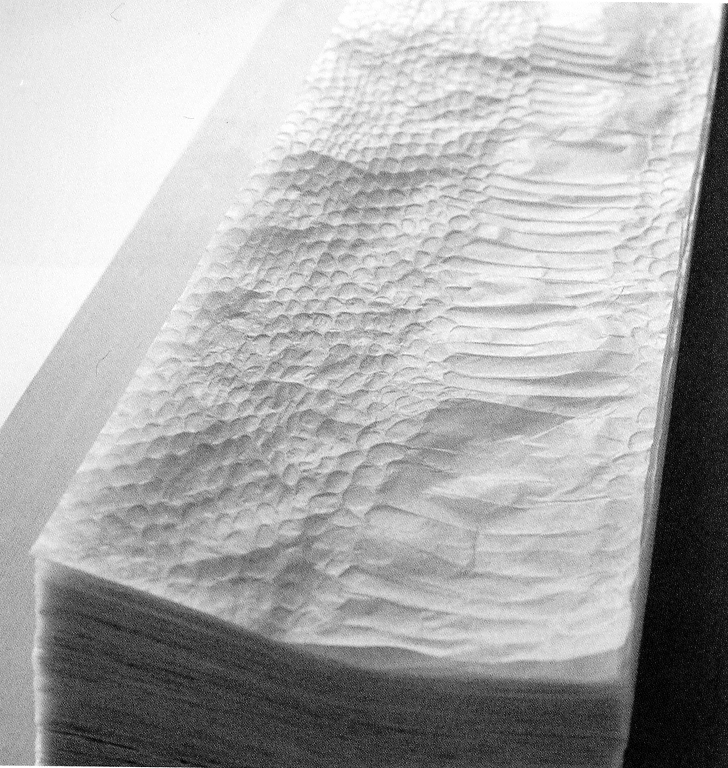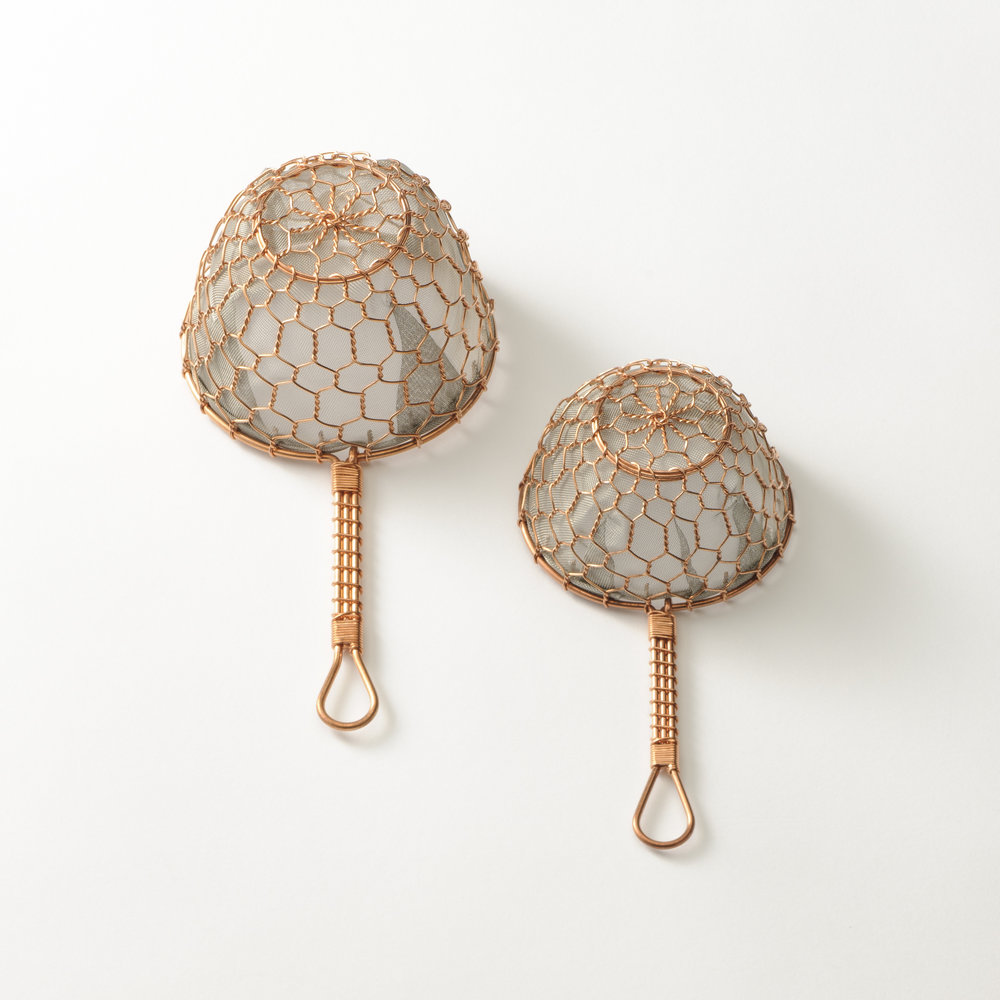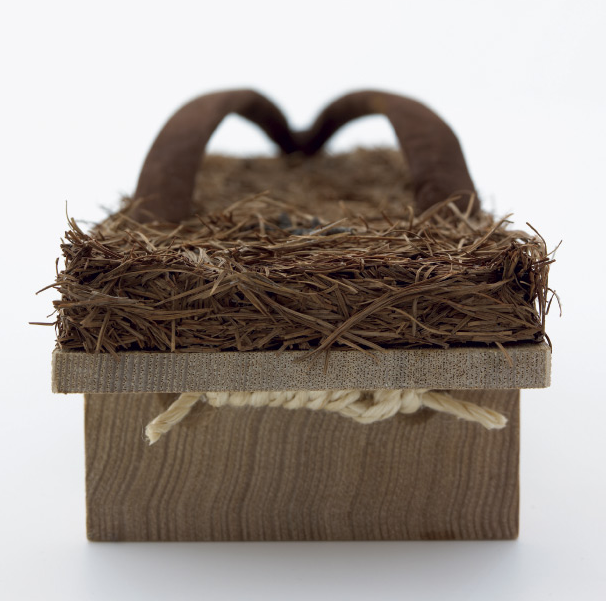creative HOROSCOPE, fall 2019
Fall Equinox · New beginnings & introspection · September 23
New moon in Libra · Balance & harmony · September 28
New moon in Scorpio · Deep feelings & introspection · October 28
New moon in Sagittarius · Searching for meaning · November 26
New moon in Capricorn · Uncovering hidden values · November 26
Diagram by Kenya Hara
On September 2, Mars, which orbits outside of the orbit of Earth, will pass us on the far side of the moon. According to Planetary Defence Team Member, Gordon Johnston, writing from NASA headquarters, “Mars will be shifting from the evening sky to the morning sky and will begin emerging from the glow of the dawn on the eastern horizon in late September or early October.” This stealthy increase in the morning light is the beginning of a quietly rewarding fall. At the same time, a new moon in Libra opens up new opportunities for balance and harmony as October begins.
Kenya Hara, who is best known as the lead designer at MUJI, has a way of soothing me into fall life. On our street there is a day late in late fall when all the leaves, which turn the colour of lime marmalade in September, and gold in October, suddenly all blow away in big gusts. The day after feels colourless and desolate. This is when Kenya Hara’s minimalist enthusiasm for white space makes me feel more cheerful about the pale greys and soft whites to come in the fog, rain, and snow. In his books, Designing Design, White 白, and Ex-formation, Kenya Hara asks pleasant questions, like, what are the architectural possibilities of macaroni? Or, What information is contained in a stone and how can we extract it?
In Designing Design, Kenya Hara writes the “the mind exists everywhere in the body,” suggesting, “let’s consider the brain as existing everywhere in the body.” Okay, Kenya Hara. September is a good time to use all our available sensory brain power as our skin adjusts from cotton to wool, and our noses are alert to isoprenoids from the oils coating the falling leaves. When we use all our senses together, Kenya Hara believes it makes us feel peaceful.
Aries
In 1975, the global supply of household matches began to quietly but steadily decrease due the rise of the disposable lighter. Today, we are surrounded by many household items which emit light and heat. However, as Kenya Hara points out, “there are fewer and fewer occasions in which we actually handle fire”. Hara invited lighting designer Kaoru Mende to redesign the match for the exhibition Re-Design: Daily Products of the 21st century. Mende used a combustible substance to coat the tips of natural twigs from the forest floor. Hara feels that this design asks us not only to consider the relationship between humans and fire, but to the line of time running from our ancestors to our present moment, when, with the match, we “place fire in the palm of our hands.”
Italians, drawing from the legacy of Dante, don’t pussyfoot around when talking about flames (fiamme). They don’t ask for a “light” for their cigarette, they ask for fire directly, like this: “Fuoco?”. Ecco, bravi. Like the Italian smokers of 1975, be clear and be direct (and stylish), but keep it within reason. For excitable Aries, the quest for fire can become non-stop! Take breaks and avoid overwork for the sake of your health. (Also, please note that this horoscope doesn’t advise smoking in 2019, you maniacs.)
Consider your proposals carefully and deliberately in September. Then, once you have a plan, move swiftly ahead and do the work. Be efficient. A match can only be lit once and lasts only a few seconds. Don’t delay or you could miss an important opportunity.
Power texture: bark
Power sensor: palm of the hand
Taurus
The cabbage is a very humble vegetable. It’s not Instagram-friendly like a watermelon radish. The cabbage is cheap. It’s common. It’s doesn’t smell very nice. It’s a survival vegetable. But, it is not only these things.
When artist Yasuhiro Suzuki created these paper cabbage bowls he looked at the cabbage more deeply, seeing the cabbage’s solid, beautiful structure and complex texture. He used silicone to mold real cabbage leaves and cast them in paperclay, so that “all the leaves of a single cabbage have been reproduced.” The final paper cabbage, which you can peel paper bowls off of until you have a large set of paper dishes, weighs almost as much as the original.
The cabbage bowls were designed for Kenya Hara’s HAPTIC exhibition. He writes, “It must be fun to use these bowls at a dinner party. Imagine the feeling of holding a paper cabbage-leaf bowl. It’s strange to the touch. The human mind takes pleasure in complex things like these, which carry a plethora of information.” By paying such careful attention to the structure of the cabbage Yashuhiro Suzuki leads us to consider it as respectfully as he does.
Taurus, your enviable confidence sometimes makes it hard to be humble, but this is a good season to practice the cabbage’s quieter brand of confidence. Listening to input from others carefully and calmly will help you develop meaningful solutions with surprisingly delightful results by the end of the season.
power texture: cardboard
power sensor: fingertips
Gemini
The design projects Kenya Hara writes about in his books are often not “real”. They are proposals — sometimes rejected ones — and prototypes. The challenge that designers have when they get fanciful is that their concepts are testable in practical terms. Design ideas sit in messy gap between commercial product and art.
Our home has some MUJI products. However, although I enjoy visiting MUJI, I wouldn’t want to live in the showroom. Once I shopped at a MUJI alongside a woman wearing a long white evening dress. She had a white purse and was wearing white heels. She was wearing a white feather boa. Her basket was full of white ceramic and linen items. Kenya Hara has written at length about the possibilities of emptiness (空白) signified to him by white (白), but this seemed extremely devotional to the MUJI brand. Does she listen to MUJI’s in-store acoustic mandolin music at home? I wondered. Would it make a person exhausted to be surrounded by the possibility of emptiness all day? Isn’t this MUJI store a showroom built to articulate a viewpoint, not meant to be taken literally? And yet, eating a bowl of yellow curry (available at MUJI) in her kitchen must be quite an intense experience! A bowl of red apples would be satisfyingly red in such a space. I imagine her peeling a red apple with satisfaction.
The only item pictured in this month’s horoscope which is commercially available (and which our family has in our home) is the iconic MUJI diffuser. In the summer it’s pretty dormant, but in winter when it’s dark outside and dry inside, it fills the air with forest and flower scents. Everyday magic.
Gemini, this season your creativity is high, but translating your ideas into tangible results is going to frustrate you. Avoid extremes. Embrace the imperfect process of production. Reward yourself for all your hard work. Yes, it was worth it.
power texture: vapour
power sensor: shoulder
Soft Serve Ice Cream Machine
Cancer
Ex-formation is the title of a series of projects Kenya Hara conducted with his students at Musashino Art University. To explore ex-formation is to make “known things unknown” and revive our curiosity about everyday items and ideas. Soft-serve Ice Cream Machine by Shino Ito, Aya Kazama and Mona Tanaka was their response to the question: what is resort?.
“As soon as the cone is in our hands we forget the hustle and bustle of reality; we are instantly transported into ‘soft-serve ice cream time,’ Kenya Hara explains. He wonders if this is because the sweetness of ice cream, like the time spent in a resort, is so ephemeral that makes it such a special experience.
The design team for Soft-serve Ice Cream Machine redesigned the familiar shape of the ice cream by using different shaped nozzles and different hand motions when holding the cone underneath the nozzle. Each ice cream cone contains the same ice cream, but the experience changes from cone to cone.
The purpose of Ex-formation is to disrupt the modern person from meeting all information with an impatient, “I know, I know!” because saying, “I know, I know” ends a conversation before it has begun. Cancers, naturally intuitive, and haters of small-talk, can sometimes move too quickly through the world, sidestepping surprises. As summer comes to a close, slow down, take a break to rest and wonder. Find your way into ‘soft-serve ice cream time’ so you can return refreshed and ready for action. The fall will take you somewhere new and delightful.
Power texture: ice
Power sensor: ear
Leo
The Architects Macaroni Design Exhibition of 1995 was curated by Kenya Hara to answer the question: can food be designed? He felt that cooking can broadly be considered an act of design. For example, the shape of a boiled potato is crushed and it transforms into mashed potatoes. Unfortunately, it was a failure as a product exhibition. The pasta wasn’t designed to be commercially produced. However, the larger purpose of the exhibit was to promote the Japan Institute of Architects, and whereas most of us don’t really understand how a building is made, almost all of us have made macaroni. So, we are on equal ground to appreciate its design.
Art director Kaoru Kasai presented the OTTOCO pasta. The shape is based upon the traditional Japanese dance mask, with its “familiar protruding mouth.” To go with it, he made a recipe for Pie Stuffed with Pasta and Carbonara sauce. When the box of pie was delivered and opened, he imagined the little mouths of each OTTOCO exhaling little puffs of steam into the cool air. OTTOCO has never been commercially produced, but it is very easy to imagine using. Most recipes that I’ve pinned on Pinterest are just things I like to imagine making which I won’t. Imaginary cooking is an underappreciated branch of cookery.
Leo, this season you may find yourself cooking up ideas and schemes with little possibility for commercial production. Pursue them anyway. They will lead somewhere unexpected that you need to go and will pay off in the early New Year.
power texture: powder
power sensor: back of the neck
Virgo
Minimalist painter and sculptor Lee Ufan is a founding member of the group Mono-ha or もの派 (School of Things). Members work with a mixture of natural and industrial materials. Lee felt that artists’ ability to create has been undermined by technology and reveal the world by “engaging with materials and exploring their properties.” He made Relatum (formerly Language), 1971 from large stones resting on cushions and lighting.
A stone on a cushion is ridiculous. But when we see a stone resting on cushion technology it really does bring out all the nature-made stone’s qualities in relief. Not just its hardness, but also its texture, weight, inanimate bluntness: its total stoneness.
If you are patiently wondering what stones on cushions have to do with you, practical Virgo, it’s this: understanding the foundation of your practice is key to making meaningful work. It’s easy to get caught up in the speed technology allows us, but slowing down will allow you to see how the materials around you are actually revealed as they are transformed by technology. For example, when print was the ruling technology for publishing, paper was, as Kenya Hara describes “an unconscious surface.” The more obsolete the screen makes the book, the more the true nature of print is revealed: the smell of the ink, the texture of its surface, the sound of pages. Reading a book in a print format becomes a conscious choice which can never be the same as it used to be.
Use the changes happening around you to become more aware of who you are and what you want.
power texture: concrete
power sensor: eye
Libra
What napkin do you offer guests, Libra? Simple cotton, fancy linen or do you tear them off a paper towel? Kengo Kuma’s Cast Off Snakeskin Paper Towel reveals what a paper towel could be. The Cast Off Snakeskin Paper Towel is made by laser cutting an acrylic model and pressing very thin washi paper against it. The result feels like a fragile piece of snakeskin (the scale of a 2m snake). The piece was for Kenya Hara’s HAPTIC exhibition. Hara reports that people feel hesitant to use the paper towel, worried that these ‘elite’ paper towels are too good to be used! A paper towel that feels special enough to use for a guest is nice, but even better is the speed-bump it puts in front of the snatch-and-wipe impulse that a paper towel creates just by existing. What if you hesitated each time you reached for one and wondered, “Do I really need to use this?”
Shouldn’t these elite serpentine paper towels belong to the luxe Cancer or the regal Leo? No! They were born too early and have to make do with some old Bounty. You deserve only the best paper towels to clean up your birthday party. Besides, your whole thing is balance, and Kengo Kuma exemplifies a pleasant ‘use, but use in moderation’ design philosophy. You would benefit from learning to apply this.
In September, you will have a harder time than usual striking the balance between your work and your personal life. Keep the connecting points aligned: interpersonal relationships will make or break work projects. Also, if you have been hoarding fancy paper napkins, make a big spaghetti dinner in November and use them up. Carpe Diem, Libras.
power texture: snakeskin
power sensor: belly
Chojiro I, Black raku tea bowl called “Koto”, photo by Ueda Yoshihiko, from White
Scorpio
Many people mistake decoration and novelty for design, but you, Scorpio, get it intuitively. When you see a perfect water glass, you notice its lovely utility while your tablemates are gulping down the contents. At the thrift store, you spot treasure first. This ability to see what others can’t see, like most gifts, is annoying for you sometimes. Why don’t people see what you see when it’s so obvious? Being a designer often calls upon a willingness to teach, and much of your energy goes to showing, even just by example, what a designed life can be.
In the book “White” by Kenya Hara, a book he wrote to share his philosophy of design, there are three images. One of them is this 450 year-old black tea bowl from the Raku Museum in Kyoto. The bowl was made by the founder of the Raku family, Chijiro. As it happened, Chijiro, who was a tile maker, was living in the dawn of a new era in Japan. The Onin War of 1467 had destroyed temples full of work by craftsmen in Kyoto — several generations’ of work was burned within a decade. In the ashes of this, the Shogun Ashikaga Yoshimasa built a simple temple where he practiced calligraphy and painting and performed tea ceremonies. This new period in Japan — the Ashikaga period — is when the idea of beauty in wabi (rustic, austere, withered) grew popular. Chijiiro was commissioned to make a tea bowl for 侘茶 wabicha (simple tea ceremony) and he captured the emerging Ashikaga spirit: handmade and plain. Resourceful.
Simplicity and self-reliance have always been your watch words and you are entering a new period where these qualities will make your life shine. Don’t over-think it.
power texture: clay
power sensor: heart
Sagittarius
Kenya Hara writes often about finding a balance between traditional craftsmanship and modern production techniques. In late spring, several Japanese craftsmen were invited to speak about their work in Vancouver at the shop InForm Interiors for Japan Handmade. They each talked about the importance of tradition, innovation, materials, and technique. Afterwards, an audience member asked if they felt pressure from an increasingly competitive marketplace to produce cheaper, more market-friendly goods. Several of the craftsmen answered this politely before Toru Tsuji took the microphone.
Toru Tsuji hand weaves wire utensils and servers with his dad for Kanaami Industrial Crafts. They produce two pretty patterns of netting ware: tortoiseshell and chrysanthemum. Because these beautiful items are durable and designed to be used, they are popular with chefs. But they are not competitively priced. A tea strainer produced by them costs about $150, about $143 more than an inexpensive one from a dollar store. The craftsmen who spoke before Toru had pointed out the pleasures of consuming less in quantity and more in quality. They talked about durability. One tea caddy maker remarked that his family still offers repairs on caddies that were purchased 70 or 80 years ago which were made by his grandparents. But Toru Tsuji’s answer was simpler. He said, “I feel no pressure, only power.”
This season, you are ready to make big changes. Taking on ambitious projects, raising your rates, and using your intuition will put you on a new path you might not have realized you were ready for. Feel no pressure, only power.
power texture: spikes
power sensor: nose
Capricorn
The sophisticated sensors in our hands help our brain recognize a familiar object in about 10 seconds without help from our eyes. Our feet can’t do this as well. Toes are shorter and less flexible than fingers and the sensors in our feet are less familiar with the information our brain needs. But feet are more than misshapen hands. They contain their own possibilities. While hands spend all day tapping a screen, feet live a simple analogue lifestyle. Their ancestors used to pick up detailed information for us from cool pine forests and spiky rocky beaches.
Kenya Hara realized that “amazing sensitivity lies dormant in the soles of our feet,” while on a trip to Bali, where he had to walk a path barefoot to get to an inn (nobody wore shoes on the path by custom). He found the sensation of his feet on the worn stone to be “wonderfully familiar, like cuddling my old cat”. As he walked on it, he began to wonder how much information was contained in the stone (he felt like it was a lot), and that made him wonder if the media overload we experience today isn’t due to the quantity of the information in our environment, but how fragmented it is — a storm of small low-quality fragments. Imagine if shoes had insulated him from the stone’s powerful information! He was free of shoe logic.
Plasterer Shuhei Hasado made geta (wooden sandals) with bottoms covered by moss, hay, clay, and other textures to reconnect our feet to the natural world. Feet need their chance to shine. Do you have abilities that are kept locked up during work hours? Put a few hours aside in Sepctember for your less cared for parts to reach your full power. Go outside, far away from all screens, and soak in the last of the summer’s information before it’s time to wrap up your feet in thick autumn socks. Once October begins, you will have your work cut out for you.
power texture: grass
power sensor: sole of the foot
Aquarius
There’s an elderly dachshund who lives on the top floor of our building. On the elevator and I say to him, “Hi-i! Hi-iii!” in a higher pitch than my usual voice, meaning, “See, I’m not a dachshund murderer. Please don’t bite me.” He gives me a polite tail wag, but keeps one eye on me, which is smart because I’m 7 times taller than him and clumsy. He never takes the stairs. Each step is taller than him by an inch and his long back makes it impossible for him to hop up and down them, which even the tiny maltese on the 4th floor can do no problem. If only we lived somewhere more reasonable like a plain or a field or a meadow, we could roam as equals.
For the exhibition, Architecture for Dogs, Kenya Hara invited Yoshiharu Tsukamoto and Momoyo Kaijima (Atelier Bow-Wow) to participate. They specialize in Micro Public Spaces, the little fragments of public space in cities, like the gaps between buildings. For Architecture for Dogs, they designed a gently sloped wooden ramp connected to a seat at one side and a covering at the other end for burrowing. A person can sunbathe while their friend climbs up and down independently and/or hides. The template for the design is available to download at architecturefordogs.com.
This fall, Aquarius, your wellbeing will depend on others and their wellbeing will depend upon you. Keep your feelers out for people who might need your consideration. And be ready to put aside your independence to ask for help when you need it for larger projects. Delegate and trade in some favours rather than pulling all nighters. We’re all in this together.
power texture: fur
power sensor: nose
Pisces
When Kenya Hara curates an exhibition, he doesn’t enter in his own work, but for his HAPTIC exhibit in 2004 he broke the rules after encountering super-hydrophobic technology. Super-hydrophobic technology was developed to keep snow from sticking to satellite dishes. When sprayed on a business card, it repels any water drop it touches. Kenya Hara was so excited about the possibilities of super-hydrophobic technology that he broke down and made the Water Pachinko Machine for his own exhibition. Instead of metal balls, his game is played with drops of water. This makes it much quieter than the usual pachinko experience. Droplets of water which are 5mm or less roll like over the board like balls, but droplets greater than 7mm wiggle around like amoebas, as you try to tilt them into holes in the board. “It’s a very haptic scene,” explains Hara. Paper and water are usually drawn to one another, but in this game they run counter to one another.
Maybe in these shorter days you might find yourself feeling tired of your creative work. If you design, even though you are extremely good at it, you might find yourself feeling annoyed with posters, business cards, or other paper items. You might say to your friend one day, “I hate books!” because even though you love books, they are often completely aggravating to produce. Just because you make it look easy doesn’t mean it is. Maybe the most helpful thing that Kenya Hara ever wrote is that “Verbalizing design is another act of design.” Mashing potatoes, according to him, is also design. I think he means that design is just a way of looking at something until you find a possibility and then applying technique to transform it into what you imagined: something new and delightful. The person who most deserves to be delighted by what you make is you. Because YOU, Pisces, are amazing. Find new goals and creative projects to sink into in these increasingly generous nights.
power texture: potato
power sensor: ear
This horoscope is inspired by poet Lisa Robertson’s interior design horoscope called Decorator Horoscope for Nest magazine, which she wrote under the pseudonym ‘Swann’.














